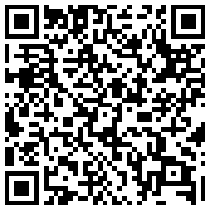
Categories
Money money money...
Could we help you? Please click the banners. We are young and desperately need the money



Last updated: July 14th 2025
Categories: IT Development, Laravel
Author: Ian Walser
Laravel Security Basics - Protect Your Web Apps Like a Pro



Introduction
Laravel is one of the most popular PHP frameworks for building web applications. Its clean syntax, rich ecosystem, and MVC architecture make it a favorite among junior and senior developers alike. But with great power comes great responsibility—especially when it comes to web application security.
In this post, we’ll walk through the fundamental security practices in Laravel that every junior developer should know. From protecting routes to preventing XSS and SQL injection attacks, you’ll get hands-on guidance with code examples to keep your Laravel app secure.
Why Security Matters in Laravel
Laravel makes development faster and easier, but skipping security best practices can open doors to serious vulnerabilities like data breaches, XSS attacks, and SQL injections. If you're building an application that handles user data, financial information, or anything sensitive, then understanding Laravel’s built-in security features is essential.
1. Laravel’s Authentication System
Laravel provides a full-featured authentication system out of the box. You can scaffold it using:
php artisan make:authThis will set up:
- User registration
- Login and logout
- Password resets
- Email verification
You can read more about laravel starter kits in the official laravel documentation.
Best Practices for Authentication
- Always use HTTPS for login and registration forms
- Force email verification before granting access to critical routes
- Use Laravel’s default bcrypt password hashing (or switch to Argon2i)
// In User model
use Illuminate\Contracts\Auth\MustVerifyEmail;
class User extends Authenticatable implements MustVerifyEmail
{
// ...
}
2. Protecting Routes with Middleware
Middleware in Laravel allows you to filter HTTP requests. You can use it to restrict access to certain routes.
// In routes/web.php
Route::middleware(['auth'])->group(function () {
Route::get('/dashboard', [DashboardController::class, 'index']);
});
Built-in middlewares like "auth", "verified", and "throttle" help protect your application efficiently.
Custom Middleware
php artisan make:middleware IsAdmin
// In app/Http/Middleware/IsAdmin.php
public function handle($request, Closure $next)
{
if (!auth()->user() || !auth()->user()->is_admin) {
abort(403);
}
return $next($request);
}
3. CSRF Protection
Cross-Site Request Forgery (CSRF) attacks trick users into submitting unwanted requests. Laravel includes CSRF protection by default.
To include a CSRF token in your forms, use:
<form method="POST" action="/profile">
@csrf
<input type="text" name="name">
<button type="submit">Save</button>
</form>
4. Preventing SQL Injection
Laravel uses the PDO parameter binding technique to prevent SQL injection attacks.
// Safe query using Eloquent
User::where('email', $email)->first();
// Safe query using DB facade
DB::table('users')->where('email', $email)->first();
Never use raw queries with user input unless you sanitize or bind parameters properly.
5. XSS Protection with Blade Templates
Cross-Site Scripting (XSS) happens when attackers inject JavaScript into your pages. Laravel’s Blade template engine automatically escapes output:
<!-- Escaped Output -->
{{ $userInput }}
<!-- Not escaped: Use only when safe -->
{!! $trustedHtml !!}
6. Secure Validation of User Input
Always validate and sanitize user input before processing it. Laravel offers robust request validation:
// In Controller
$request->validate([
'name' => 'required|string|max:255',
'email' => 'required|email|unique:users',
'age' => 'nullable|integer|min:18',
]);
Using Form Requests
For cleaner code, move validation to Form Request classes:
php artisan make:request StoreUserRequest// In StoreUserRequest.php
public function rules()
{
return [
'name' => 'required|string|max:255',
'email' => 'required|email|unique:users',
];
}
7. Hashing Passwords Securely
Laravel uses "bcrypt" by default, but you can also use "argon2" for even stronger security:
use Illuminate\Support\Facades\Hash;
$password = 'secret123';
$hashed = Hash::make($password);
// Verifying
if (Hash::check($password, $hashed)) {
// Password is valid
}
8. Encryption and Secure Storage
Laravel provides AES-256 and AES-128 encryption via the "Crypt" facade:
use Illuminate\Support\Facades\Crypt;
$encrypted = Crypt::encryptString('Sensitive data');
$decrypted = Crypt::decryptString($encrypted);
Use it for securely storing API keys, tokens, and sensitive user data.
9. HTTPS and Secure Headers
Always serve your Laravel application over HTTPS. Enforce it with middleware:
// In AppServiceProvider
use Illuminate\Support\Facades\URL;
public function boot()
{
if (env('APP_ENV') !== 'local') {
URL::forceScheme('https');
}
}
Use the Laravel security headers package or configure headers manually to prevent attacks like clickjacking, MIME sniffing, etc.
10. Keeping Laravel Up-To-Date
Always keep your Laravel version, PHP, and dependencies up-to-date. New versions often include important security patches.
composer updateBonus: Useful Laravel Security Packages
- spatie/laravel-permission – Role & Permission management
- laravel/sanctum – API Token Authentication
- Laravel Security Headers – Add secure HTTP headers
Conclusion
Security is not a one-time thing—it's a mindset. As a junior developer, mastering Laravel’s built-in security tools and understanding best practices early in your career will set you up for long-term success.
